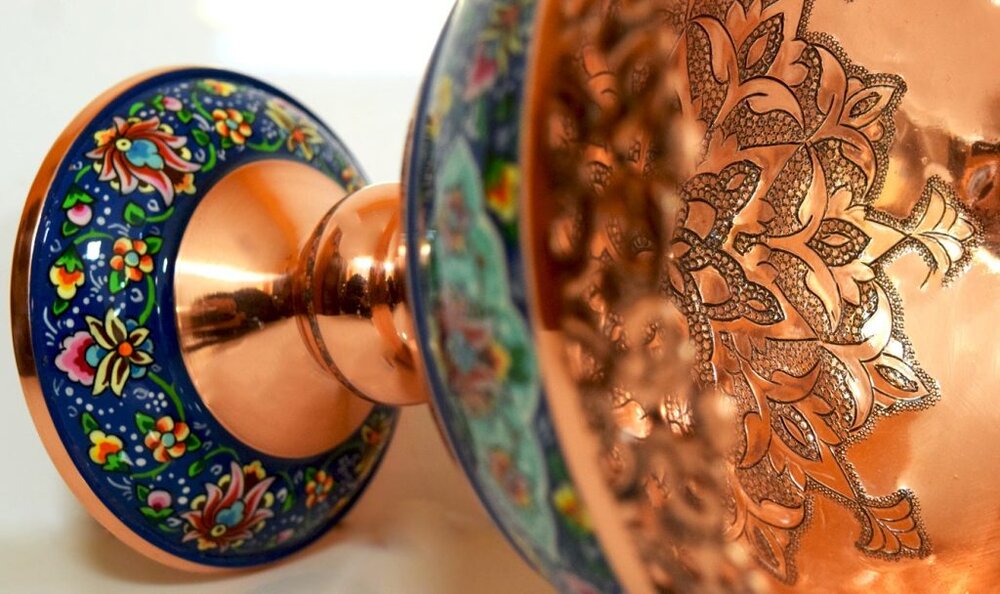74 Isfahan handicrafts awarded National Seal of Excellence

TEHRAN – A selection of 74 quality works handcrafted by natives of Isfahan province have been awarded the National Seal of Excellence.
Of the designated objects are enamel works, metalwork decorations, kilim carpets, and handwoven textiles, CHTN quoted Isfahan province’s tourism chief as saying on Monday.
The National Seal of Excellence is given to high-quality, selected works to support craftspeople, improve the quality of their works preserve the originality of this industry, and create sustainable employment.
Selected works have characteristics such as originality, creativity, recyclability, supply in the international market, reasonable pricing, respect for human rights, progress in everyday life, and product innovation.
With 14 entries, Iran ranks first globally for the number of cities and villages registered by the World Crafts Council, as China with seven entries, Chile with four, and India with three ones come next.
In January 2020, the cities of Shiraz, Malayer, and Zanjan and the village of Qassemabad were designated by the WCC-Asia Pacific Region, putting Iran’s number of world crafts cities and villages from ten to 14.
The value of Iran’s handicrafts exports stood at $120 million during the first eleven months of the past Iranian calendar year 1399 (March 20, 2020 – February 18, 2021), Mehr reported. The country’s handicrafts exports slumped during the mentioned months in comparison to the same period last a year earlier due to the damage the coronavirus pandemic has inflicted on global trade.
The Islamic Republic exported $427 million worth of handicrafts during the first eleven months of the calendar year 1398. Of the figure, some $190 million was earned via suitcase trade (allowed for customs-free and tax-free transfer) through 20 provinces, according to data compiled by the Ministry of Cultural Heritage, Tourism and Handicrafts.
Handwoven textiles, ceramics, pottery vessels, handwoven cloths as well as personal ornamentations with precious and semi-precious gemstones are traditionally exported to Iraq, Afghanistan, Germany, the U.S., the UK, and other countries.
Isfahan has long been nicknamed as Nesf-e-Jahan which is translated into “half the world”; meaning seeing it is relevant to see the whole world. In its heyday, it was also one of the largest cities in the region with a population of nearly one million. Modern Isfahan is now home to some heavy industry, including steel factories and a nuclear facility on its outskirts, however, the city’s inner core seeks to preserve its priceless gem.
AFM
Leave a Comment